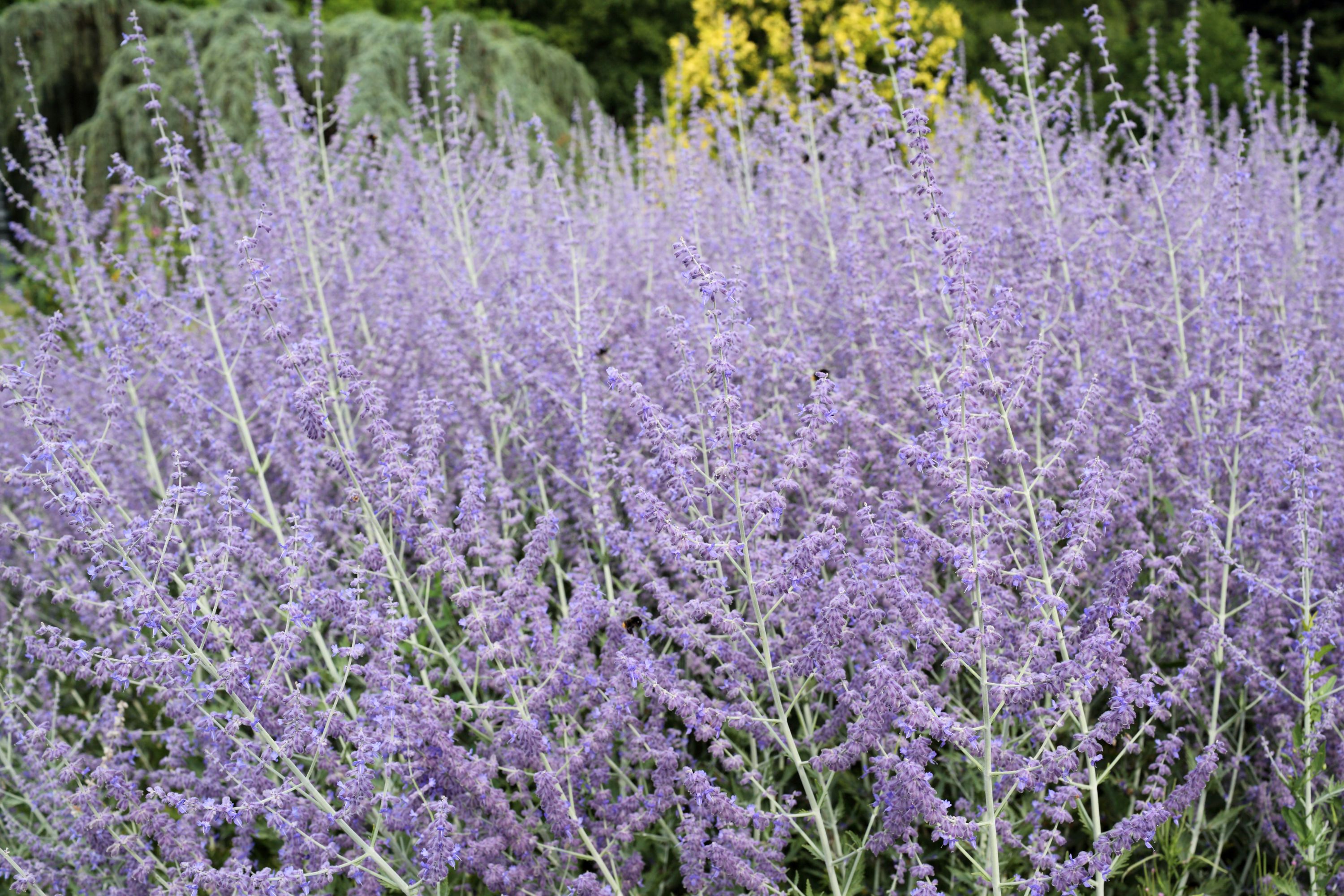Russian sage
(Perovskia atriplicifolia)

Description
Perovskia atriplicifolia is a beautiful flowering perennial plant that is native to central Asia. It is commonly known as Russian sage or Blue spire. The plant belongs to the Lamiaceae family, which also includes other popular herbs like mint, rosemary, and lavender. Perovskia atriplicifolia is widely grown as an ornamental plant for its beautiful lavender-blue flowers and aromatic foliage. In this article, we will discuss the plant's origin, physical characteristics, cultivation, propagation, and some of its uses. Origin and distribution Perovskia atriplicifolia is native to central Asia and can be found growing wild in regions like Afghanistan, Pakistan, and Iran. It was first introduced to the Western world by the Russian botanist V. A. Ovczinnikov in the early 1900s. Since then, it has become a popular ornamental plant and is widely grown in gardens and parks all over the world. Physical characteristics Perovskia atriplicifolia is a deciduous shrub that can grow up to 4 feet tall and spread up to 3 feet wide. The plant has a bushy, upright habit and produces multiple stems that are covered in grey-green, fragrant leaves. The leaves are narrow and lance-shaped, and they have a silver-grey appearance due to the fine hairs covering the surface. In late summer and early fall, the plant produces long, slender spikes of small, tubular flowers that are a beautiful shade of lavender-blue. The flowers are densely packed and can be up to 18 inches long, making them a striking feature in any garden. Cultivation Perovskia atriplicifolia is a hardy plant that is relatively easy to grow, making it an ideal choice for both novice and experienced gardeners. The plant prefers well-drained soil and full sun exposure but can tolerate some shade. It is also drought-tolerant and can survive in regions with little rainfall. In regions with harsh winters, the plant may die back to the ground, but it will regrow in the spring. Propagation Perovskia atriplicifolia can be propagated from seed or by taking cuttings. To propagate from seed, sow the seeds indoors in the spring, and transplant the seedlings outside after the last frost. Cuttings can be taken in the summer by removing a section of stem with a few leaves attached and planting it in a pot with moist soil. Keep the pot in a warm, bright location until roots form, and then transplant the cutting into the garden. Uses Perovskia atriplicifolia is primarily grown as an ornamental plant for its beautiful flowers and aromatic foliage. The plant is also used in traditional medicine in some parts of central Asia, where it is believed to have medicinal properties. The plant is said to have antibacterial, antifungal, and anti-inflammatory properties, and it is used to treat a range of ailments, including respiratory infections, digestive disorders, and skin conditions. Conclusion Perovskia atriplicifolia is a beautiful and versatile plant that is well-suited to a wide range of growing conditions. It is relatively easy to grow and maintain and can provide a striking feature in any garden. Whether you are a novice or an experienced gardener, Russian sage is a must-have plant for any garden.
Taxonomic tree:







